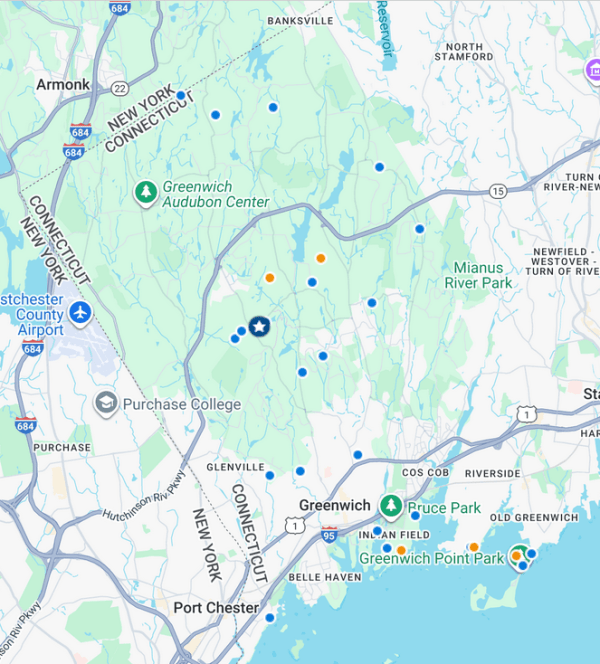By Clay Kaufman
Confidence. With so many children, it’s the key to success, and something we as educators and parents strive to foster. Sometimes confidence comes simply from opportunity. When my son was 9, he asked if he could take his younger sister, who was 7, to the park down the street by himself. The park was only a block away in our residential area, but there are many people who feel that a 9-year-old is too young to take on that responsibility. My son made his case, however, and promised they would come back in 20 minutes, which they did. He was beaming, and his sister couldn’t have been happier. They started going to the park together on a regular basis, my daughter loved it, and my son’s confidence grew with each trip. After about 3 weeks, they went to the park and came back just minutes later. I was puzzled and asked him what happened. He explained, “Dad, there were some loud teenagers there, and I thought it was more responsible if we just came right back.” Confidence breeds confidence, and my son was proud of making a responsible decision for his sister.
In a similar way, when students gain confidence in the classroom, they become more motivated to put in the work, as they are hopeful and expectant. For students with learning differences (and actually for all students, according to the research), some tools are especially effective in building confidence. In particular, I have seen students and teachers use color-coding effectively to boost memory, provide visual clues and boost confidence.
In writing, color-coding can be a very effective organizational strategy. Marking a thesis statement/topic sentence in green, examples in yellow and explanation/analysis in red, for example, gives a visual reminder to include a topic sentence and examples, and to focus most of the writing on explanation and analysis. At the school I headed in Maryland, we taught the 4th and 5th graders to write in color on the computer, and at the high school level, students wrote down their ideas on colored note cards, which they organized on a metal ring. Once they had created enough cards and organized them, writing the actual essay was much easier, as the essay was fully planned. Many of the students took that method to college and used it to write all their essays. Color-coding can also be very effective when analyzing written text, using colored highlighters to “find the thesis” and identify the examples. And when the youngest students brainstorm ideas, color-coding can be effective in organizing similar ideas by marking them with the same color. Even if students are not using color-coding in school, they can still employ the strategy at home.
In history, color-coding can be an effective studying technique for marking cause and effect, noting events from different time periods, or associating historical events with particular people or geographic regions. For example, one might color-code the following events from the American Revolution to indicate a British action vs. a colonial response:
Navigation Acts
Tea Act
1st Continental Congress
Proclamation Line of 1763
Boston Tea Party
Townshend Acts
Thomas Paine’s pamphlet “Common Sense”
Math and science also present great opportunities for color-coding. For preschoolers, sorting games that allow children to practice sorting by color, shape and size help students learn to look for patterns, one of the core skills in math that applies to every aspect of learning. For elementary students, using color for operations (blue for addition, red for subtraction) or for place value (units in green, tens’ place in blue, etc) or for adding positive and negative integers helps memory. And for Algebra, color-coding can help students “code” problems in which they must combine like terms, such as when adding 4x + 2y – 7x – 13y. In more advanced classes, color-coding helps when graphing lines and rational equations, identifying sides of a triangle for Trigonometry and the different parts of linear equations (such as y= mx + b). Similarly color-coding helps when balancing chemistry equations, identifying parts of a nucleus or parts of a plant.
Research shows that visual strategies help students learn and recall information, whether or not students have learning differences, and hands-on activities also greatly support learning and build confidence. Color-coding can even be a great boon at home when creating charts for chores, setting up the family calendar with different colors for each daily member or each activity and even for children’s morning routine–especially if they can set up the chart themselves.
All children benefit from strategies that help them learn efficiently and keep up with their peers. In my lengthy experience with students with learning differences, I have seen hands-on visual strategies, such as color-coding make a big difference in confidence and help students help themselves bothe at home and at school. And confident children are more ready to learn and gain independence.
Clay Kaufman, a longtime educator and school leader, is former Head of School at The Cedar School, a high school for students with language-based learning differences, such as dyslexia, in Greenwich, and is currently at Ethical Culture Fieldston School in Riverdale.




